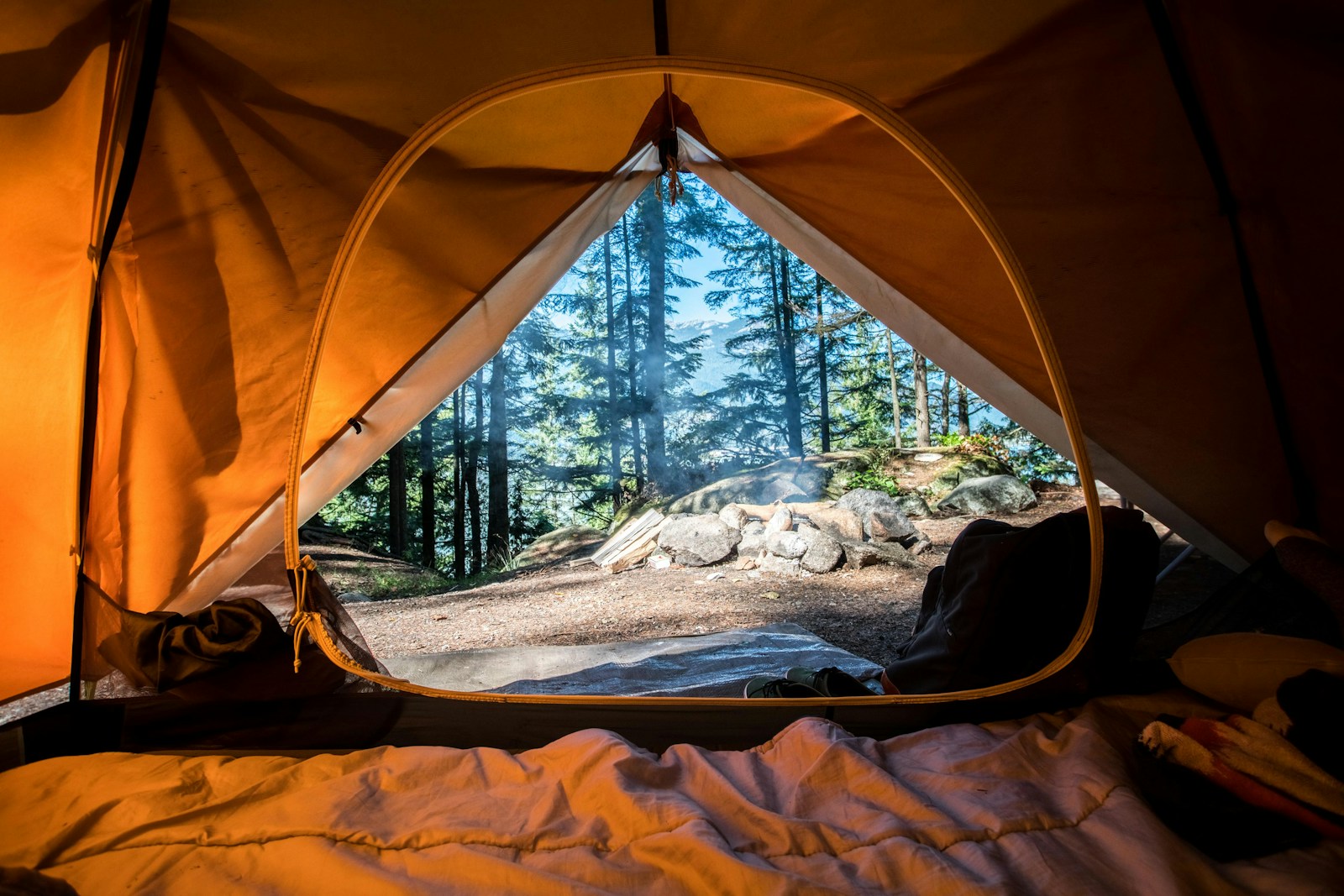Mountain lions, also known as cougars or pumas, are majestic but potentially dangerous predators that roam many wilderness areas across North America. While attacks on humans are extremely rare, knowing how to respond during an unexpected encounter could make all the difference between a frightening story to tell and a tragic outcome. As outdoor recreation continues to grow in popularity, the chances of crossing paths with these elusive cats increase, making it essential for hikers to understand mountain lion behavior and appropriate response tactics. This article provides comprehensive guidance on what to do before, during, and after a mountain lion encounter, equipping you with potentially life-saving knowledge for your next wilderness adventure.
Understanding Mountain Lion Territory and Behavior
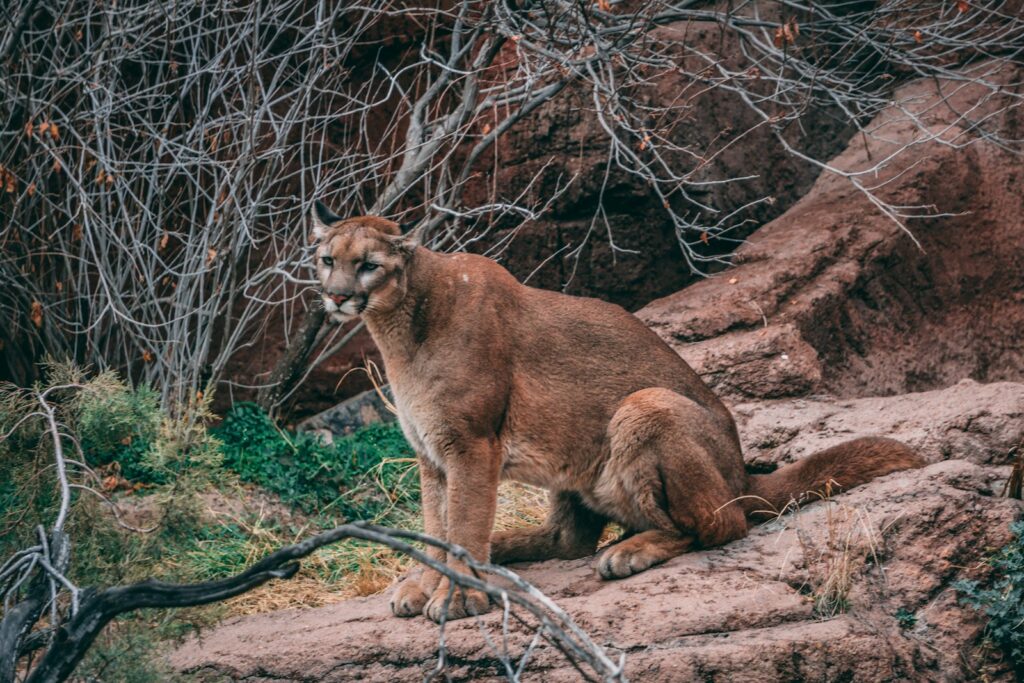
Mountain lions typically inhabit remote, rugged terrain throughout the western United States, parts of Canada, and South America, though sightings have occurred in eastern states as well. These solitary and territorial predators prefer areas with dense vegetation and rocky outcroppings that provide good hunting opportunities for their primary prey—deer. Mountain lions are crepuscular, meaning they’re most active at dawn and dusk, though they may hunt at any time. Their natural behavior is to avoid humans whenever possible, which explains why many people hike in mountain lion territory for years without ever spotting one. Understanding that you’re entering their habitat, not the other way around, forms the foundation for respectful and safe wilderness experiences.
Prevention: Before You Hit the Trail

The best mountain lion encounter is the one that never happens, which makes prevention your first line of defense. Before embarking on a hike in known mountain lion territory, research recent sightings or activity in the area through local ranger stations or wildlife management offices. Hike in groups whenever possible, as mountain lions are much less likely to approach multiple people than a solitary hiker. Make noise while hiking—conversation, singing, or occasional clapping—to announce your presence and reduce the chances of surprising a lion. Avoid hiking during dawn or dusk when these cats are most active, and always keep children close and under direct supervision. Additionally, consider carrying deterrents such as bear spray, which can be effective against mountain lions as well.
Recognizing Signs of Mountain Lion Presence

Being able to identify evidence of mountain lion activity can help you stay alert in high-risk areas. Fresh tracks resembling large cat prints without claw marks (unlike bear tracks) indicate recent mountain lion movement. Look for scrapes in the dirt or leaf litter, which lions create to mark territory by piling material and sometimes urinating on it. Mountain lion scat often contains hair and bone fragments and is typically segmented, unlike that of bears or coyotes. Cached prey—partially eaten animals covered with dirt, leaves, or pine needles—is another clear sign of mountain lion presence. If you notice an unusual silence in the forest, such as birds suddenly stopping their calls, it could indicate a predator’s presence nearby and warrant extra vigilance.
What to Do Upon First Sighting
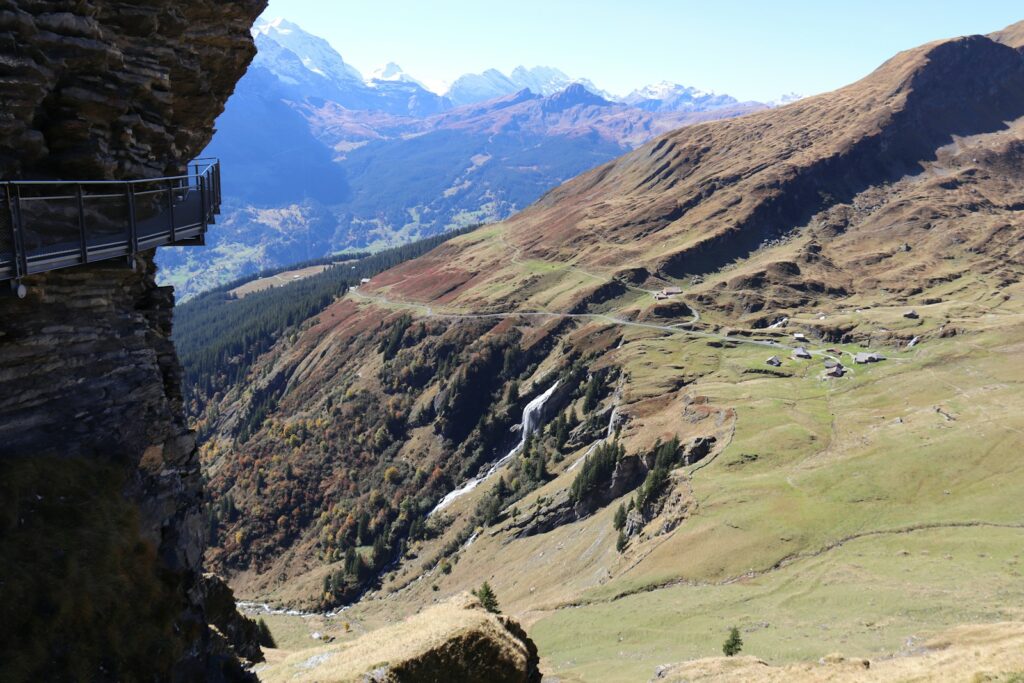
The moment you spot a mountain lion, your immediate actions can significantly influence how the encounter unfolds. Stop in your tracks but avoid any sudden movements that might trigger the cat’s predatory instincts. Maintain direct eye contact with the mountain lion to demonstrate you’re not prey—animals typically don’t look their predators in the eye. Make yourself appear as large as possible by raising your arms, opening your jacket if you’re wearing one, or lifting your backpack above your head. If you’re with children, pick them up immediately without bending over or turning your back to the lion. Speak firmly and loudly to the animal in a commanding voice, which helps establish your dominance and may cause it to retreat. Remember that your goal isn’t to provoke aggression but to convince the mountain lion you’re not worth the risk of confrontation.
Body Language and Positioning

Your body language communicates powerful messages to a mountain lion about whether you’re a threat or potential prey. Stand your ground and face the animal directly, never turning your back or running away, which can trigger the lion’s chase instinct. Position yourself on higher ground if possible, as this gives you a psychological advantage and makes you appear more formidable. Keep your body position open and tall, with shoulders back and chest forward, projecting confidence even if you don’t feel it. If you’re hiking with others, gather together to present a unified front that appears larger and more intimidating. Maintain a strong posture throughout the encounter, as any sign of weakness or submission might embolden the mountain lion to advance.
Responding to Various Mountain Lion Behaviors
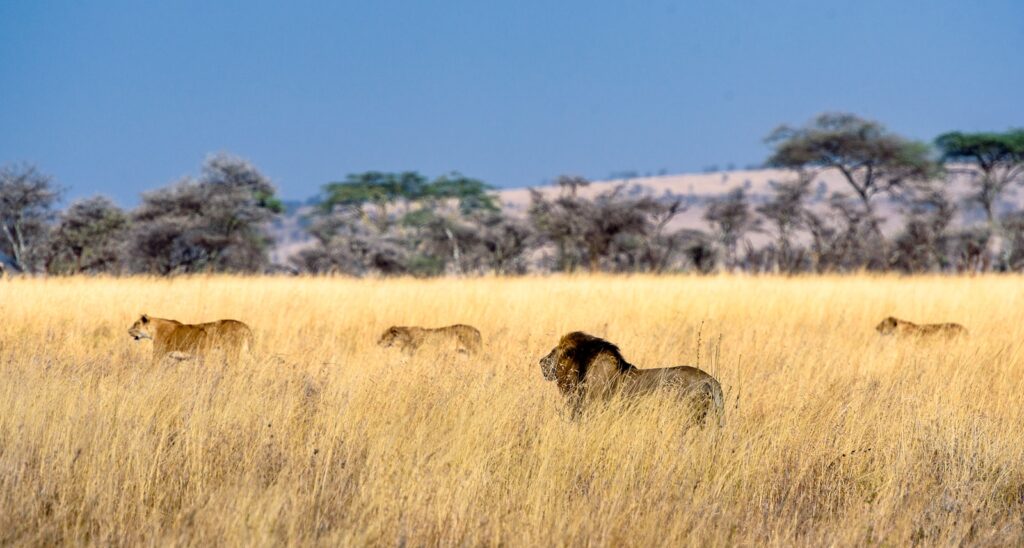
Mountain lions display different behaviors that can help you gauge their intentions and respond appropriately. A lion that appears calm and is simply watching you from a distance is likely assessing the situation and may move on if you maintain a non-threatening presence while backing away slowly. If the lion seems interested but hesitant, with its ears forward and tail swishing occasionally, it’s still deciding whether you represent a threat or potential prey—this is when making yourself appear larger and speaking firmly can discourage approach. Signs of agitation or pre-attack behavior include crouching, tail twitching, ears flattened back, and intense staring with the cat’s head lowered—these signals require immediate assertive responses like shouting, waving arms aggressively, and preparing to defend yourself. A mountain lion that hisses, growls, or bares its teeth is displaying defensive aggression and warning you to back off, which you should do slowly while continuing to face the animal.
When a Mountain Lion Approaches

An approaching mountain lion requires immediate assertive action to deter the potential attack. Intensify your intimidation tactics by shouting, clapping, blowing a whistle, or using any loud noise-making device you have available. Throw objects like rocks or sticks toward (but not directly at) the lion to scare it without provoking aggression through direct hits. If you’re carrying bear spray, prepare to use it if the lion comes within the effective range (typically 25-30 feet). Continue backing away slowly if possible, maintaining eye contact and a confident posture throughout this process. Never turn your back, crouch down, or make sudden darting movements that might trigger the cat’s chase response. If the lion continues to approach despite these measures, prepare to actively defend yourself as the situation may be escalating toward an attack.
Defending Yourself During an Attack
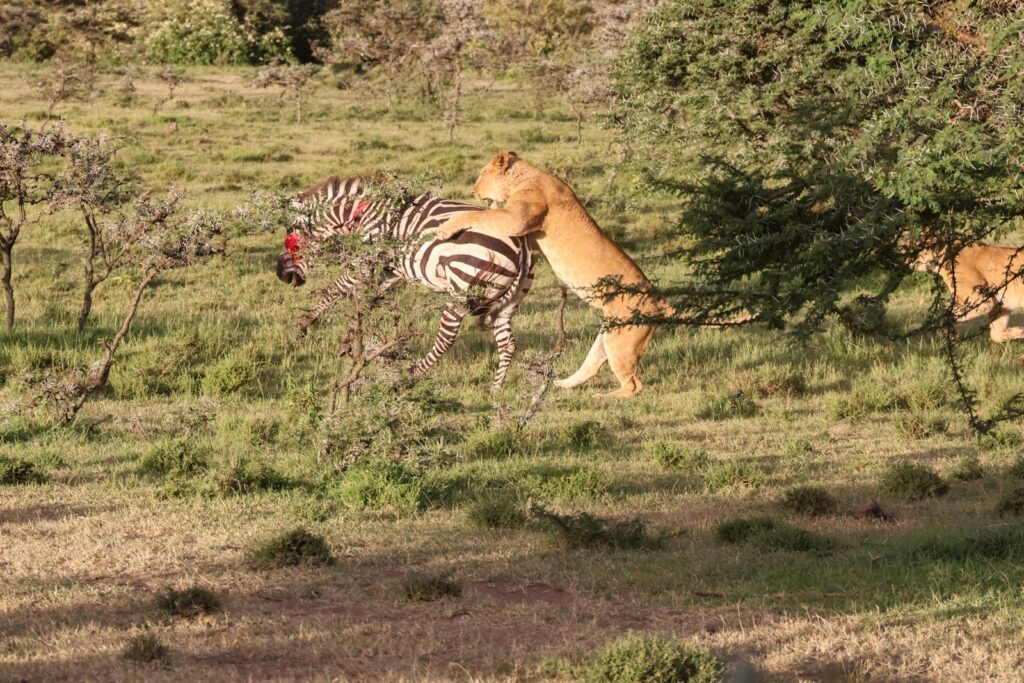
In the extremely rare event that a mountain lion attacks, your response must shift from deterrence to active self-defense. Fight back with everything available—use sticks, rocks, trekking poles, knives, or any improvised weapon to strike the lion’s face, especially targeting sensitive areas like the eyes and nose. Your bare hands can be effective weapons too; punch, kick, and use your body weight to fend off the predator. Never play dead during a mountain lion attack, as these predators, unlike some bears, will continue to see you as prey. If you’re wearing a backpack, use it as a shield between you and the cat while you fight back. Remember that most people who have survived mountain lion attacks have done so by fighting aggressively until the animal retreats, proving that your fierce response can convince the lion you’re not worth the effort and risk.
Protecting Others in Your Group
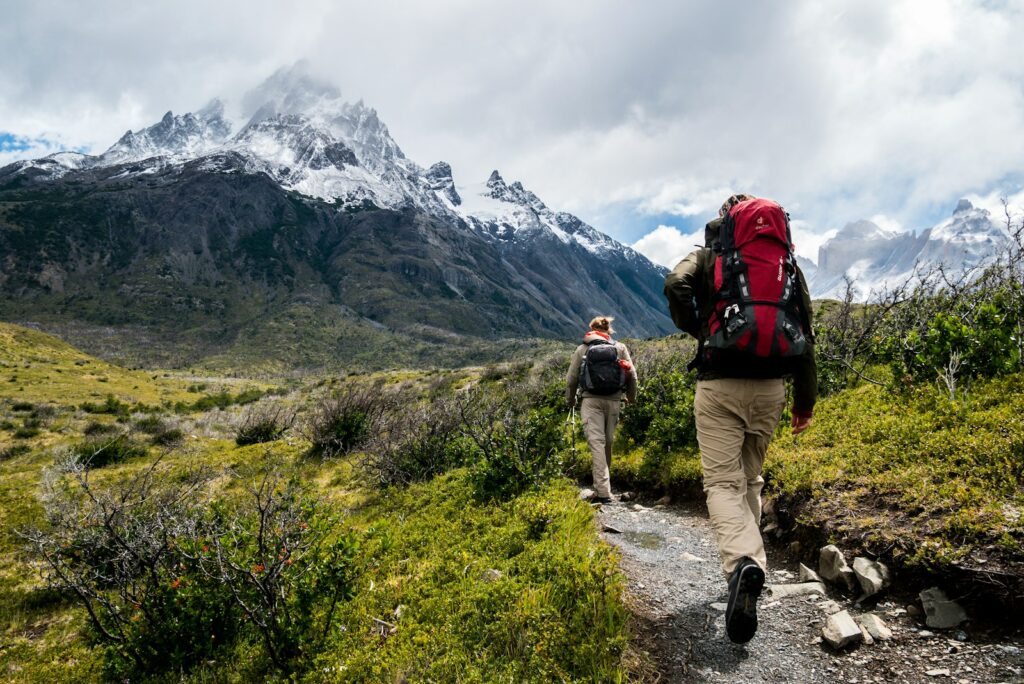
If you’re hiking with others during a mountain lion encounter, group dynamics become crucial to everyone’s safety. Form a tight group with all members facing outward to appear as one large organism rather than multiple smaller targets. Place children and smaller individuals in the center of the group, with adults creating a protective perimeter. Coordinate your actions and vocalizations—shouting together creates a more intimidating sound than individual voices. Designate specific roles if possible; have one person watch the lion while others prepare deterrents or assist those who need help. If someone panics and wants to run, physically restrain them if necessary, as running could endanger everyone by triggering the lion’s chase instinct. Remember that your collective response should project unity and coordinated strength, which is far more likely to deter a mountain lion than scattered individual reactions.
Navigating Away From the Encounter
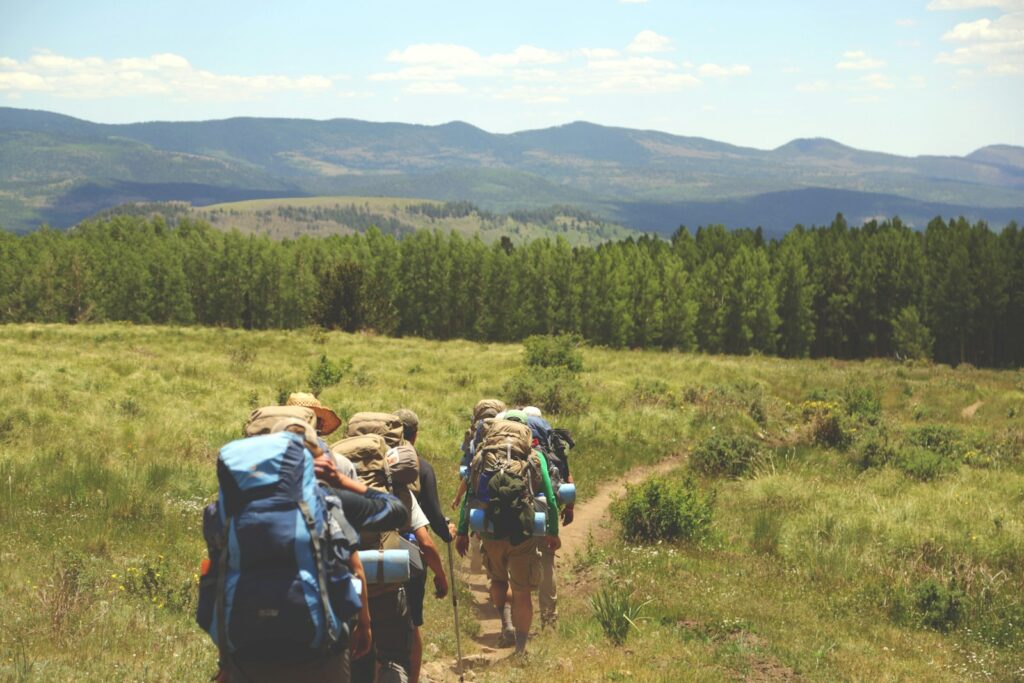
Once the immediate threat has subsided and the mountain lion appears to be retreating or holding its position, you must carefully navigate away from the area. Back away slowly while continuing to face the lion, maintaining eye contact and your imposing stance. Move toward open areas away from potential ambush spots like dense brush or rock outcroppings where the lion might circle around to stalk you. Continue making noise as you retreat, ensuring the lion knows exactly where you are to prevent surprising it again. If you need to bend down to help someone or retrieve dropped items, do so while facing the lion and minimizing the time spent in a vulnerable position. Keep up your vigilance for at least 20-30 minutes after the sighting and for the remainder of your hike, as mountain lions can track potential prey for considerable distances.
Special Considerations for Children and Pets

Children and pets require special protection during mountain lion encounters due to their smaller size, which mountain lions may perceive as easier prey. Always keep children within arm’s reach when hiking in mountain lion country, and teach them in advance what to do if they spot a large cat—stay close to adults, make noise, and never run. If a mountain lion appears, immediately pick up small children without bending down if possible, or place them on your shoulders to make them appear part of your larger silhouette. For pets, keep dogs on a short leash in mountain lion territory, as free-roaming dogs can either provoke a lion or lead one back to you when retreating. If your pet is attacked, experts advise against intervening directly, as harsh as this sounds, because many human victims of mountain lion attacks were injured trying to protect their pets. Instead, use all your deterrent tactics from a safe distance to try driving the lion away.
Reporting the Encounter

After safely navigating away from a mountain lion encounter, reporting the incident becomes your responsibility as both a citizen scientist and safety advocate for other hikers. Contact the nearest ranger station, visitor center, or local wildlife management office as soon as possible with details about the location, time, and nature of the encounter. Be prepared to describe the lion’s behavior, physical condition, and any identifying characteristics you noticed. If possible, mark the location on a map or GPS device to provide precise coordinates. Wildlife officials use this information to track mountain lion populations, identify potentially problematic individuals, and implement appropriate management strategies. Your report might also prompt authorities to post warning signs or temporarily close trails if the lion displayed unusually aggressive behavior that could endanger other hikers.
Psychological Impacts and Processing the Experience

Encountering a mountain lion can be a profoundly emotional experience that may leave lasting psychological impressions long after the event itself. Many people report a range of reactions including adrenaline-induced euphoria, delayed fear responses, nightmares, or temporary anxiety about returning to wilderness areas. Acknowledge these feelings as normal responses to a potentially life-threatening situation, and consider discussing the experience with friends, family, or even a counselor if the encounter was particularly traumatic. Some hikers find that educating themselves further about mountain lions helps process the experience by transforming fear into respect and understanding. Writing about your encounter or sharing it in appropriate forums can not only help you integrate the experience but also educate others. Remember that even negative wildlife encounters offer valuable learning opportunities and often create meaningful connections with nature that deepen our appreciation for wild places and their inhabitants.
Conclusion
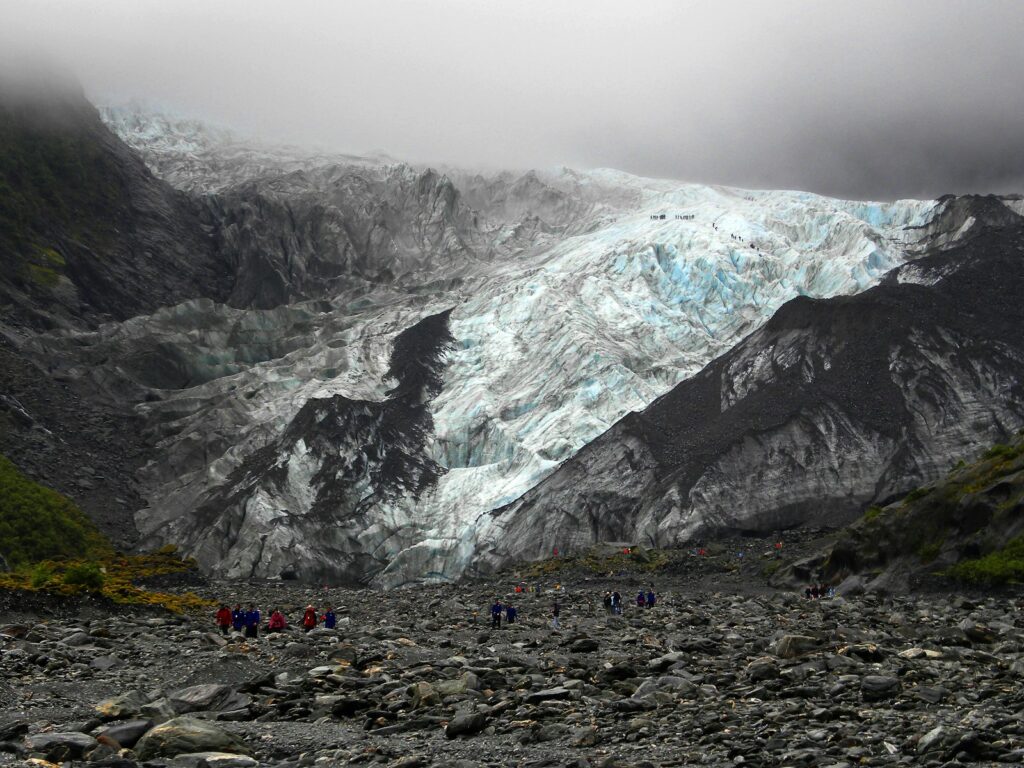
In conclusion, mountain lion encounters, while rare, require knowledge, preparation, and a calm, assertive response. Understanding that these magnificent predators nearly always prefer to avoid humans can help alleviate excessive fear while still maintaining appropriate caution in their territory. By following the guidelines outlined above—from prevention strategies to proper response techniques—you significantly reduce the already minimal risk these animals pose. The wilderness offers unparalleled experiences precisely because it remains wild and sometimes unpredictable, complete with its full complement of native species including predators. Armed with knowledge and preparation, you can venture confidently into mountain lion country, respecting these animals’ right to exist while ensuring your own safety through awareness and appropriate behavior.

